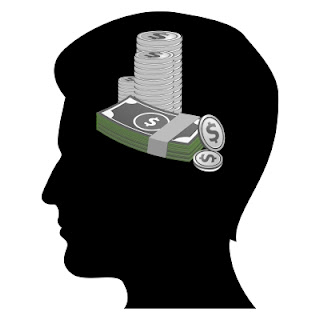What’s in a Name?: DSM Criteria and Addiction
“What’s in a name? That which we call a rose, by any other name would smell as sweet.” This is the famous question posed by Juliet in the immortalized balcony scene. And while Shakespeare could afford to question the idea, patients with mental disorders, scientists who study the disorders, and the insurance agents that fund the aid have not yet found a way to do without names. In a recent interview, Steven Hyman puts this sentiment in his own words: “Classifications are, in the end, cognitive schemata that we impose on data in order to organize and manipulate it. Many disorders are better represented for scientific purposes, but also for setting rational thresholds for treatments as continuous quantitative dimensions.”
Coinciding with the 2nd Annual Neuroethics Award, several staff members of Emory’s Center for Ethics interviewed Dr. Steven Hyman,
the esteemed Director of the Broad Institute Stanley Center for
Psychiatric Research and former provost from Harvard who is a part of
the committee for the DSM-5,
among his many prestigious positions. In one year, the fifth edition of
the DSM (Diagnostic and Statistical Manual of Mental Disorders) will be
released. It has been twelve years since the last edition was
published. In the past few months, however, the committee organizing the
DSM has experienced much pressure from many concerned parties. Of
course, when there is such a negative reaction, it is important to
remember the important functions that the DSM plays. Ultimately, these
naming guidelines provide a standardized way for clinicians and patients
to cooperate.
Dr. Hyman gave us a better understanding about the thought processes for decisions, such as the likely choice of the DSM-5 recognizing gambling as a behavioral addiction. “The core of addiction is an inability to control use, and that’s often best described as continued use despite potently negative consequences. For example, a person may continue to drink despite his spouse leaving and being threatened with being fired from his job.”
 |
| Image: freedigitalphotos.net |
“Observers and clinicians have made a very strong case that gambling – as people go form being a social drinker to an alcoholic compulsive drinker, people can go from being a recreational gambler to being a compulsive one despite the negative consequences of stealing your kid’s college money, losing it on roulette, and being unable to make the mortgage payment.” He explained the neurological basis of this addiction by saying, “In neuroscience, we now recognize the compulsion that is related to drug use involves brain reward circuits, and the neurotransmitter dopamine and failures of the prefrontal cortex to exert top-down negative control on these behaviors.” He admits that he does not personally believe that the research regarding gambling and brain circuitry is very robust, but he still believes that the evidence is adequate for it to be defined in the DSM-5.
Dr. Hyman and the DSM-5 committee still grapple with many difficult questions. One of the most important questions being, “Where does it stop?” He asks, “Is there a sex addiction? Is there a shopping addiction?” The Chinese government wanted the WHO (World Health Organization) to recognize Internet addiction because of the number of young people that are “flunking out of life in some way as a result.” Though, this is an unlikely addition to the DSM, there are many existing decisions that people refuse to accept. Hyman points to the effects of these changes as being initially a questioning of existing societal values, but the changes also mark alterations to policy decisions because “permitting a diagnosis of compulsive gambling begins to medicalize a trait that previously was seen as willful condition. Defining gambling, as an addiction will present all sorts of legal and societal implications. Since the addiction is based in the malfunction of the brain, the diagnosis risks reductionism to a purely biological phenomenon, which could compromise the efficacy of voluntary efforts by an addicted person.
 |
| http://io9.com/388744/a-chinese-cure-for-internet-addiction |
One of the other major concerns is that creating these diagnoses are a way that would allow drug companies to profit from a wider spectrum of addiction-based diseases. In response to this general public assertion, Hyman notes that in the case of drug addiction and gambling, drug companies are essentially uninvolved. Apart from stopping to smoke by using nicotine patches, Hyman says that these companies have generally kept away from these products seeing the individuals as stigmatized. Perhaps, the inclusion of these addictions in the DSM will ultimately allow for a legitimate neurological cure for these addictions and help lessen this stigma.
Though the DSM committee’s delineation is carefully constructed, the fact remains that humans are the ones holding the pencil. The definitions are bound to be somewhat shaky and imperfect. However, without these standardizations, those who suffer from a mental disorder may not be able to find adequate relief or support. Of course, the purpose of these discussions is to continue the questioning and analyzing in hopes of finding a perfect solution.
Want to cite this post?
Kallarackal, A. (2012). What’s in a Name?: DSM Criteria and Addiction. The Neuroethics Blog. Retrieved on
, from
Further Reading:
Steven Hyman’s personal opinion - “Diagnosing the DSM”
NYTimes – “ D.S.M.-5 promises to be a disaster”
Neuroethics at the Core Blog - Labeling addictions as “brain disease” could increase the social stigma
Autistic Self Advocacy Network - Analysis of the overall impact of the DSM-5 on Autism http://autisticadvocacy.org/wp-content/uploads/2012/06/DSM-5_Policy_Brief_ASAN_final.pdf




Hi Anjana --
ReplyDeleteI wonder if it would be useful to try to put a number to the "negative consequences" of a given addiction. For example, being addicted to cocaine very often results in some very non-optimal behaviors, but it seems like being addicted to the internet is a little less damaging (unless you're looking at it from the point of view of the Chinese government).
If we could decide how damaging some addiction was, maybe that would tell us how much to medicalize it as well. Insurance companies could decide that they'd cover cognitive behavioral therapy for internet addiction, but nothing beyond that.
Just a thought I had
I would love to see an agreed upon metric for the 'negative consequences' of a given behavior. (Friends of mine used to joke about the number of 'utils' associated with particular decisions.) Two issues I see with that is the amount of controversy over the algorithm for measuring said consequences, and the need to measure the 'negative consequences' associated with the medicalization of that addiction. Now that I think of it, it might be more straightforward to just measure the efficacy of psychotherapeutic approaches vs. pharmaceutical approaches, assuming that the only 'bad' thing that comes from drug-based treatment of addictions is skipping over potentially more direct or safer alternative treatments.
ReplyDeleteDavid, your example of internet addiction vs. cocaine addiction demonstrates the huge problem with rating the seriousness of an addiction by counting the negative impacts. It's problematic because of how much the legality of a particular activity determines whether a person engaging in that activity is classified as an addict. You point out this out when you say internet addiction would be more problematic in a country like China that has strict censorship laws. To what degree do the burdens of cocaine being criminalized determine the negative impacts on an American cocaine user? There's the threat of incarceration, increased prices in an illicit market leading to theft, employment drug testing, etc. Recreational drug users are subject to the same negative outcomes as abusive drug users because the activity is criminalized.
ReplyDelete